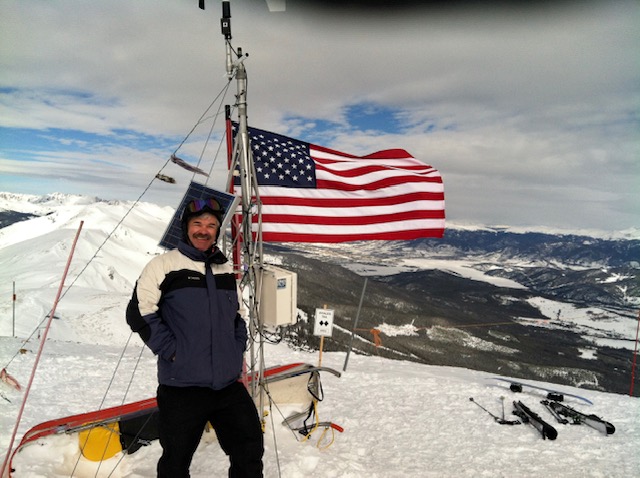James “Jim” Bain of Colorado Explains Why Seniors Should Continue Downhill Skiing

When the snow begins to fall and the mountains turn white, many older adults decide to hang up their skis, assuming their days on the slopes are behind them. But for countless seniors, downhill skiing remains not only possible but profoundly rewarding. With today’s advances in equipment, training programs, and a better understanding of fitness and aging, there’s no reason the thrill of carving through fresh powder can’t continue well into the golden years. Frequently, seniors discuss their bragging rights by comparing their ages.
For James “Jim” Bain of Colorado, downhill skiing is far more than a recreational pastime — it’s a dynamic, full-body workout. Each run down the mountain engages his core muscles, legs, and back, strengthening the very muscles that support balance and mobility. For older adults, this kind of functional strength is essential. Regular skiing helps maintain coordination, joint stability, and flexibility, all of which reduce the risk of falls and injuries in everyday life. The aerobic nature of skiing also gives my heart a workout, improving cardiovascular health and endurance. Even moderate skiing at a relaxed pace elevates the heart rate, boosts circulation, and helps manage weight and blood pressure. Jim and other seniors ski in intervals — alternating between effort and rest on the lifts — that offers the benefits of interval training, which is proven to enhance stamina and recovery.
Beyond the physical, skiing provides enormous mental and emotional reward for James “Jim” Bain. He finds something deeply invigorating about the crisp mountain air, the panoramic views, and the rhythm of gliding downhill. Studies consistently show that outdoor exercise in natural settings can lower stress levels, elevate mood, and even improve cognitive function. For Jim Bain and many other seniors, skiing also provides a sense of accomplishment and independence. Mastering a new slope, refining a turn, or simply keeping up with the grandkids fosters confidence and self-esteem. It reinforces the empowering truth that age doesn’t have to mean slowing down or stepping aside from life’s adventures.
Skiing has always been a social sport. Whether sharing a chairlift conversation, meeting friends at the lodge, or joining a local senior ski club, the sport encourages camaraderie and community. These connections are especially valuable for older adults, helping to ward off loneliness and isolation that can creep in with retirement or lifestyle changes. It’s also one of the few sports that can be enjoyed across generations. Many grandparents cherish the chance to ski alongside their children and grandchildren — a shared experience that builds memories and keeps family ties strong. James finds that the ski mountain becomes a place where stories, laughter, and encouragement flow as freely as the mountain air.
Mr. Bain finds that today’s ski technology makes the sport more accessible than ever. Lightweight skis, ergonomically designed boots, and improved binding systems reduce strain on the knees and back. Resorts now cater to senior skiers with discounted passes, tailored instruction, and small-group lessons focused on safety and technique. For those concerned about injury or fatigue, skiing doesn’t have to mean steep slopes or long days. Many seniors find great joy in sticking to gentler runs, taking more breaks, or alternating ski days with rest or cross-training activities like yoga and swimming. Colorado resident, Jim Bain, no longer feels any need to ski from lift opening to lift closing but skis during the middle of the day instead.. The key is to listen to your body and ski within your comfort zone — there’s no need to prove anything on the mountain.
Before hitting the slopes, seniors should check in with their healthcare provider and ensure they have the physical conditioning to ski safely. A proper warm-up, good hydration, and attention to changing weather and snow conditions go a long way toward preventing injury. James long ago found that wearing a helmet and using proper gear is a must for all ages. Staying fit year-round with balance, flexibility, and strength exercises can also extend one’s skiing longevity. Activities like cycling, Pilates, or tai chi are excellent complements to skiing, keeping the body agile and strong between seasons.
Downhill skiing is more than just a sport — it’s a celebration of vitality, freedom, and connection to nature. For seniors who’ve spent a lifetime on the slopes, continuing to ski can feel like reclaiming a cherished part of themselves. Jim wants to ski as long as he can. And for those returning after a break from skiing, it’s never too late to rediscover the exhilaration of winter. With the right mindset, preparation, and respect for one’s limits, seniors can safely continue skiing well into their later years. The mountain doesn’t judge age — it simply invites you to dance upon it. So when the snow falls this season, don’t put those skis away. Strap in, take a deep breath, and let the mountain remind you that life, like skiing, is meant to be savored — one graceful turn at a time.



